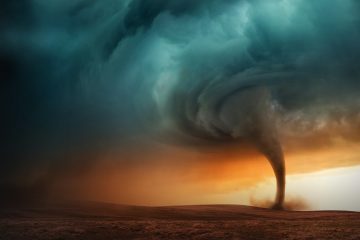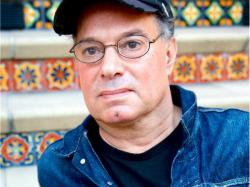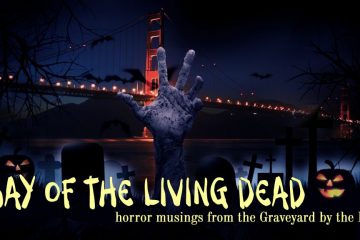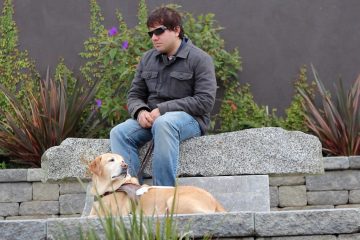Bay of the Living Dead: The Beauty of Mario Bava

Welcome to Bay of the Living Dead, a regular column about the horror genre.
The column returns after a two month hiatus. Glad to be back!
Few filmmakers can match the stunning visual beauty of Mario Bava, the Italian auteur who made a number of horror films in Italy during the 1960s and 70s. Bava’s films were dark fairy tales which pulled viewers into an otherworldly universe.
Kino Lorber, purveyors of classic cinema on DVD and Blu Ray, offers up a number of restored Bava titles on disc, including his two most famous films, Black Sunday (1960) and Black Sabbath (1963). As presented by Kino, both films look better than they have in many years–they most likely haven’t looked this good since their original theatrical runs more than fifty years ago.
Black Sunday was one of Bava’s first films as a director–he had been working as a cinematographer since the mid-1940s. Black Sunday is a simple tale of revenge. Asa, a 17th century witch (horror movie queen Barbara Steele) is condemned to die by her own brother. Two centuries later she returns for revenge against her descendants.
The black and white film came under fire for its shocking gore. Asa’s demise is particularly gruesome–a mask with sharp spikes on the inside is placed over her face and hammered into her flesh.
Bava shot most of the film, including outdoor sequences, on darkly lit studio bound sets, creating a shadowy, dreamlike atmosphere–the look of the film is eerily hypnotic and visually stunning. Black Sunday was a huge success in it’s day and is now considered one of the most influential, and beautifully shot, horror films ever produced. The film launched Barbara Steele’s career as the star of numerous chillers produced in Italy, England and the USA. She is perhaps the only woman to have had a sustained acting career appearing in horror films.
Unfortunately the film we in the USA are watching is not be the film that Bava produced. American International Pictures, the company which brought Black Sunday to American theaters, was notorious for tampering with many a filmmaker’s work. They removed several minutes of gore sequences, replaced the music score, and rerecorded the entire soundtrack. Even Barbara Steele, a British actress who spoke perfect English on camera, was dubbed by another actress. AIP also retitled the film–Black Sunday was AIP’s title–Bava had called the film The Mask of Satan.
Yet even in its truncated form, the beauty of Bava’s work shines through. Kino Lorber, as always, has spared no expense in finding the best source materials available and digitally restoring them to the clarity of a half century ago. As presented by Kino, Black Sunday looks brand new. It would be nice to see Bava’s cut of the film released stateside one of these days, but for now, the AIP print is what we have.
Bava’s Black Sabbath (1963) is another beautifully shot spookfest which was altered by AIP. As produced by Bava, the film consists of three unconnected horror tales. The first story, The Telephone, is about a woman who’s been getting harassing phone calls from her dead boyfriend. The second and best tale, The Wurdalak, stars horror icon Boris Karloff as a vampire who turns his entire family–including, in a most disturbing twist, his young grandson. The final offering, The Drop of Water, is about a woman who steals a ring from a corpse–only to find the corpse coming after her, looking to get its ring back.
All three stories are eerie and atmospheric, yet AIP refused to leave well enough alone. Before sending Black Sabbath out to American theaters, the company rearranged the order of the stories, replaced the film’s score (again!), editing out sequences which hint of prostitution and lesbianism, and hired another director to shoot intros to each story with Boris Karloff. Once again we’re given a beautiful looking film that simply isn’t the film that Bava intended us to see. It’s frustrating to see how much care Bava put into the production, only to see his work interfered with.
As before, Kino Lorber pulls out all stops to present the finest quality print with clear, sharp sound–presenting superb prints of classic films is what this company does best. If only they could get the rights to Bava’s original cuts of both films and present them in Italian with subtitles.
Hey, a guy can dream, can’t he………
Kino Lorber also offers Portrait of Jennie, a sublime ghost story from 1948. Joseph Cotten stars as Eben Adams, an artist who finds himself falling in love with his model (Jennifer Jones). When they first meet, she’s seven years old. Every time they see each other she’s a few years older, speaking of things that happened decades ago as though they had just happened.
It won’t take astute viewers too long to figure out that Jennie is a ghost. She’s come back to inspire Eben to create great art, and to correct a mistake that time had made–Jennie and Eben were always meant to be together. Her accidental death in a boating accident prevented them from meeting.
Portrait of Jennie is the perfect film for horror fans to watch on Valentine’s Day, which is looming on the horizon. It’s shamelessly romantic and also quite eerie–Jennie’s sudden and strange appearances and disappearances might leave some viewers looking over their shoulders. Whenever she sees Eben its as though no one else on Earth is alive except the two of them……..
Joseph Cotten gives a good performance as the lonely Eben, but its Jennifer Jones’ movie all the way. She plays Jennie from age seven until around 28 and is absolutely convincing every step of the way.
As always, Kino Lorber offers a superb print of this most unusual ghostly tale.
BOO!











